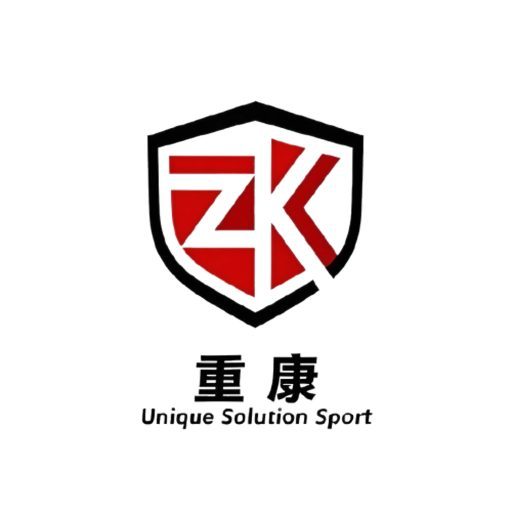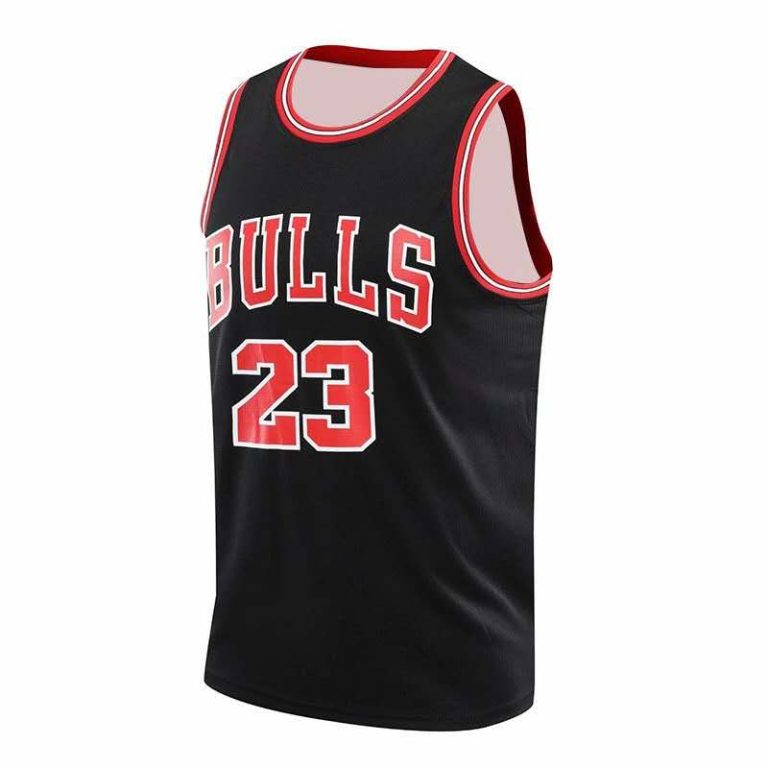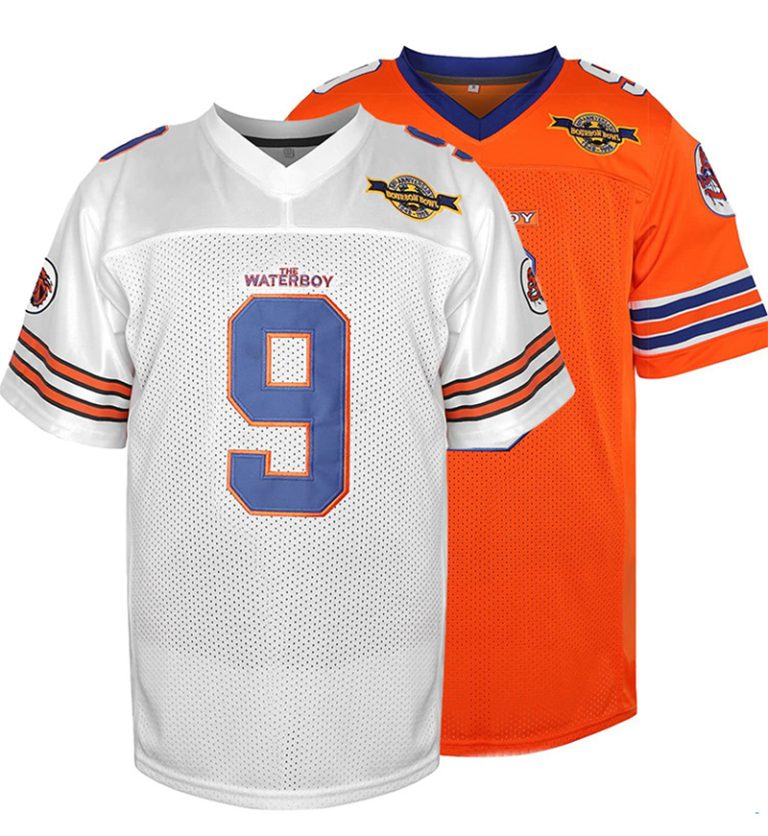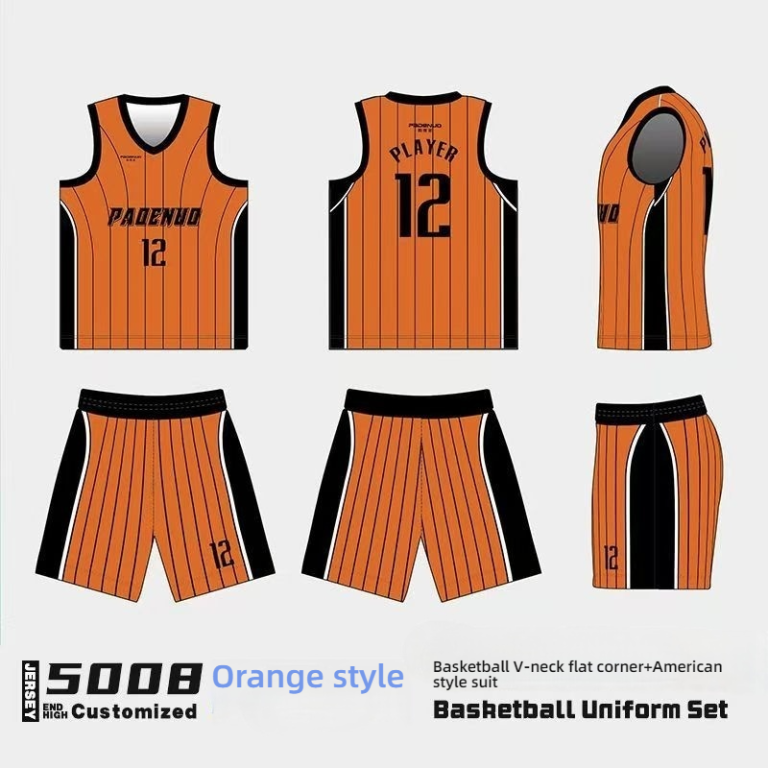48 Size Jersey: IT’s Suitability and Ideal Fit Guide
The precise selection of jersey sizes is a topic of common concern for both fans and athletes, especially in the sports market. Different sizes of jerseys represent varying degrees of body fit. The following will provide a detailed description of the for choosing jersey sizes.
Uniform Size Explanation: 48 Size Analysis
In the sports market, jerseys are an essential piece of equipment for athletes to showcase their style, and the correct size selection is crucial. The 48 size is a relatively common jersey size, and its size standards and target audience are worth delving into.
Jersey sizes are typically represented by numbers, which correspond to the chest circumference. A 48 size jersey has a chest circumference of approximately 96-100 centimeters. This size range fits most Asian adult males, as well as some slender adult males from Europe and America.
The size of a jersey is not only determined by the chest circumference but also includes parameters such as shoulder width and length. The 48 size jersey has corresponding standards for shoulder width and length to ensure comfort and a good fit when worn. Shoulder width usually ranges from 48-50 centimeters, while the length varies slightly depending on the style and brand of the jersey, but is generally between 70-75 centimeters.
When choosing a 48 size jersey, consumers need to decide whether it is suitable based on their own body measurement data. The following steps can be taken for measurement:
- Chest Circumference Measurement: Wear tight-fitting clothing, measure horizontally around the fullest part of the chest, and the resulting number is the chest circumference.
- Shoulder Width Measurement: Measure horizontally between the shoulder peaks and obtain the distance as the shoulder width.
- Length Measurement: Start from the central back of the neck and measure vertically down to the position of the jersey hem, and the resulting number is the length.
When choosing jersey sizes, in addition to referring to the above measurement data, personal preferences should also be considered. Some people may prefer a loose fit and can choose a jersey that is slightly larger than their actual chest circumference; others may prefer a snug fit and can choose a jersey that matches or is slightly smaller than their chest circumference.
The 48 size jersey holds a significant position in the sports market. It is not only commonly used by professional athletes but is also the preferred choice for amateur sports enthusiasts. Whether it’s football, basketball, or other sports, the 48 size jersey can meet the needs of most consumers.
With the popularization of sports culture, jerseys are not just a piece of sports equipment but also a symbol of fashion and identity. The design and production of 48 size jerseys often incorporate brand characteristics and fashionable elements, allowing wearers to express their personal style while exercising.
The supply chain for 48 size jerseys is relatively mature, and whether online or offline, consumers can easily find jerseys that fit their size. Brands will also continuously launch new styles of 48 size jerseys in response to market demand, satisfying consumers’ diverse choices.
As a practical sports equipment, the 48 size jersey occupies an important position in the sports market due to its size standards and the wide range of suitable audiences. Understanding the size analysis of the 48 size jersey can help consumers choose more fitting and comfortable sports apparel.

Overview of Uniform Size Standards
The standard sizes for jerseys are typically measured in centimeters or inches, aiming to ensure comfort and fit for the athletic apparel. Here is an overview of jersey size standards:
The dimensions of ready-made garments usually include key parameters such as bust circumference, shoulder width, and garment length. For example, a size 48 is considered a medium in international standards and is suitable for most adult male athletes in Asia.
A bust circumference of size 48 indicates that the jersey’s bust width is approximately between 96 to 102 centimeters, fitting the chest size of most adult males. Jerseys of this size are designed to provide sufficient room for movement without being overly loose.
The shoulder width standard in size 48 generally ranges from 43 to 45 centimeters, ensuring that the jersey does not feel too tight or too loose on the shoulders, maintaining good mobility during movement.
In terms of garment length, a size 48 jersey typically measures between 68 to 72 centimeters, which is long enough to cover the athlete’s back without being excessively long and hindering movement.
The sleeve length usually matches the garment length to ensure that the arms have ample room to move when extended, and the sleeve cuffs are designed to be moderate, neither too tight to restrict wrist movement nor too loose to cause the jersey to slip off.
The cut of the jersey also affects the final wearing effect. Common jersey cuts include standard, slim fit, and relaxed fit. The standard fit is suitable for most body types, the slim fit is more body-hugging, while the relaxed fit is better for athletes with a larger build.
The fabric of the jersey is also part of the size standard. Different fabrics may affect the perception of size, with breathable fabrics possibly requiring a slightly looser design to maintain comfort.
The placement of the jersey number and logos is also adjusted according to the size, ensuring that all details are clearly visible during play and do not interfere with the game.
Jersey size standards also take into account personal preferences. Some athletes may prefer a slightly loose fit, while others may prefer a tighter version. Therefore, when choosing a jersey, personal preferences are an important consideration in addition to the size standards.

48 size jersey is suitable for individuals.
The 48-size jersey is suitable for the following groups of people:
- Youth Athletes: As young athletes are in a stage of growth and development, the 48-size jersey fits their body well without being too loose, which doesn’t hinder their performance in sports.
- Adult Athletes: Some adult athletes may choose the 48-size jersey due to their height and body type, ensuring comfort while maintaining a professional appearance.
- Muscular Athletes: Muscular athletes can choose the 48-size jersey to better showcase their physique while ensuring the jersey’s support and flexibility during movement.
- Slim-bodied Individuals: For those with a slender build, the 48-size jersey avoids the inconvenience of being too loose during sports while maintaining a good visual appeal.
- Special Sports Activities: In certain sports such as basketball and volleyball, athletes may require stronger body support due to the nature of the sport, and the 48-size jersey can provide the appropriate snug fit.
- Fashion-Conscious Consumers: Fashion-oriented individuals may choose the 48-size jersey based on personal preference to showcase their personalized style of dressing.
- Brand Loyalists: For fans of certain brands, even if they are not the standard body type, they may choose the 48-size jersey to show their support for the brand.
The design and sizing of the 48-size jersey take into account the needs of different groups, striving to ensure comfort while meeting the requirements of performance and aesthetics. Whether for professional athletes or amateur enthusiasts, choosing the correct jersey size is crucial for enhancing the sports experience.
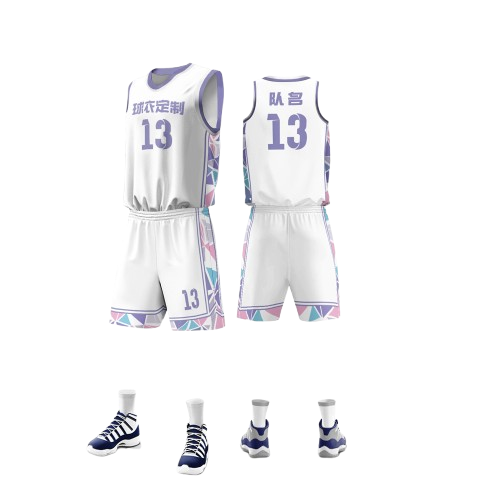
Apparel Size Measurement Method
The accurate measurement of jersey sizes is crucial for choosing the right fit. Here are some commonly used measurement methods:
Shoulder Width Measurement: Measure from one end of the shoulder to the other, typically at the shoulder peak, to obtain the most accurate shoulder width data.
Chest Measurement: While wearing the jersey, measure from the back to the fullest part of the chest. Ensure the measuring tape is level and not too tight or loose.
Waist Measurement: Measure around the waist at the narrowest part, from the same side to the, while standing naturally. The measuring tape should be snug against the skin but not too tight.
Length Measurement: Measure from the edge of the shoulder at the shoulder seam vertically down to the hem of the jersey. Ensure the measuring tape is perpendicular to the ground.
Sleeve Length Measurement: Measure from the cuff up to the highest point of the sleeve cap, or from the cuff up to the center point of the shoulder width.
Neck Measurement: Measure around the neckline, ensuring the measuring tape is snug against the neck without being too restrictive.
Arm Length Measurement: Measure from the shoulder peak down to the wrist, with the measuring tape following the natural curve of the arm.
These measurement methods are also applicable to 48-size jerseys. It is important to note that different brands and countries may have varying size standards, so it is best to refer to the specific brand’s size chart when purchasing. Here are some details for 48-size jerseys:
The shoulder width of a 48-size jersey is typically between 44-46 centimeters, suitable for individuals with a shoulder width within this range.
The chest size usually ranges from 102-108 centimeters, suitable for those with a chest size within this range.
The waist size generally falls between 86-92 centimeters, suitable for those with a waist size within this range.
The length of the jersey may be around 68-72 centimeters, suitable for consumers with specific length requirements.
The sleeve length is usually between 61-65 centimeters, suitable for those with an arm length within this range.
The neck size is typically between 44-48 centimeters, suitable for those with a neck size within this range.
When measuring, it is recommended that the wearer is dressed in clothing of a similar thickness to the jersey to obtain a more accurate size. Additionally, due to the elasticity of the fabric, there may be some relaxation when worn, so when choosing a size, one can adjust according to personal preference.

Attention Points for Choosing Shirt Sizes
When selecting jersey sizes, the following should be taken into account:
Shoulder Width: Shoulder width is a key factor in determining the fit of a jersey. Measure from the widest point of the shoulder to the opposite shoulder peak while the arms are naturally hanging down. This is the standard measurement point for shoulder width.
Chest Circumference: Measure the chest circumference at the fullest part of the chest. Stand up straight and use a soft tape measure to circle around the chest at this point, ensuring the tape is snug against the skin but not too tight. Record the chest circumference size.
Waist Circumference: Measure the waist circumference at the narrowest part of the waist. Stand up straight and wrap the soft tape measure around the waist, ensuring it is tight against the skin but not too tight. Record the waist circumference size.
Length: Measure the length from the center of the back neck down to the desired hem position of the clothing. Make sure to keep the body upright during the measurement.
Sleeve Length: Measure the sleeve length from the widest part of the shoulder down to the wrist. Keep the arm naturally hanging down and measure from the outside of the sleeve cuff to just above the wrist joint.
Neck Circumference: Measure the neck circumference at the widest part of the neck. Wrap the soft tape measure around the neck horizontally, ensuring it is snug against the skin. Record the neck circumference size.
Fit Selection: Jerseys come in different fits such as standard, slim, and relaxed. Standard fit is suitable for most body types, slim fit is for those with a slimmer build, and relaxed fit is for those with a larger frame or who need more room for movement.
Fabric Elasticity: Understanding the elasticity of the jersey fabric is also important. Elastic fabrics provide better comfort and freedom of movement, which is suitable for wearing during exercise.
Brand Differences: Different brands may have slight variations in jersey sizing. When purchasing, refer to the brand’s size chart or reviews from other consumers.
Try-On Experience: If possible, trying on the jersey is the best choice. When trying it on, check if the jersey fits well at all measurement points, including sleeve length, length, and neck circumference.
Avoid Misconceptions: Avoid choosing jersey sizes based solely on height and weight, as everyone’s body proportions and figures are different. These figures can only be used as a reference.
Consider All Factors: When purchasing a jersey, consider all the above factors to ensure you choose the size that best fits you.
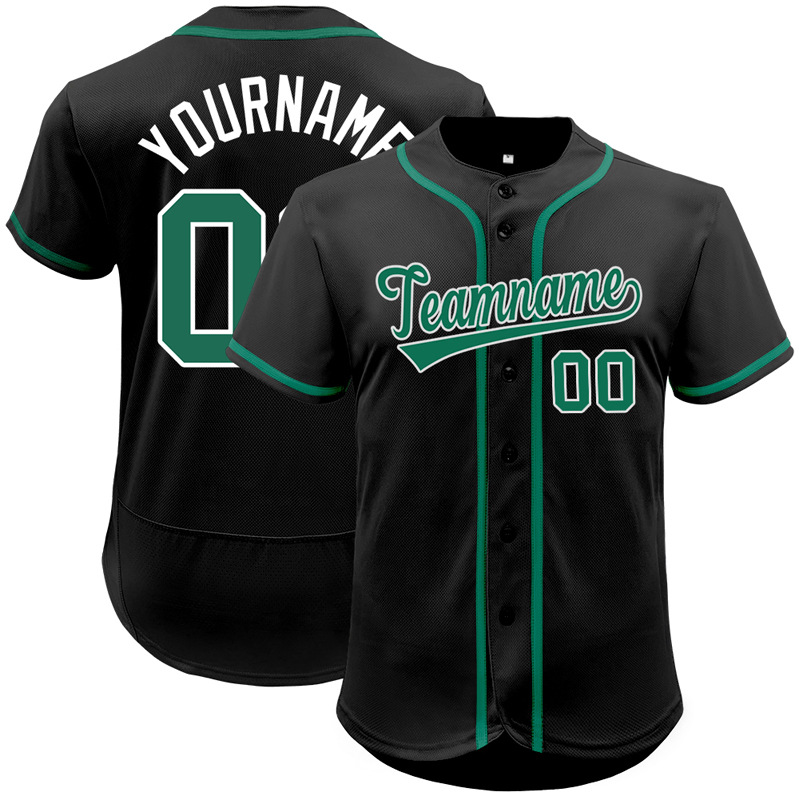
The status of a size 48 jersey in the sports goods market.
The status of 48-sized soccer jerseys in the sports market is attributed to a combination of several factors:
-
The jersey’s design is a crucial element in determining its market position. 48-sized jerseys typically feature a body-conforming fit that is neither too tight nor too loose, ensuring comfort and freedom of movement.
-
The diversity and personalization of market demand are significant contributors to the rise of the 48-sized jersey. Different sports, different body types, and age groups have varying requirements for jersey sizes, and the 48 size meets the needs of this specific demographic, thus gaining high appeal in the professional sports equipment market.
-
Brand influence is an indispensable aspect of the 48-sized jersey’s status. Many renowned sports brands offer 48-sized jerseys, indicating that this size has been recognized by the market and is considered an important part of their product line.
-
The combination of jersey material and functionality plays a vital role in its market standing. 48-sized jerseys often use high-quality, breathable, moisture-wicking fabrics that meet the demands of athletes during high-intensity workouts, thereby enhancing the product’s market competitiveness.
-
The decoration and detail design of the jersey are also significant factors in consumer choice. 48-sized jerseys often feature unique brand logos, sponsor logos, or pattern designs on the chest, back, and other locations, which not only enhance the visual appeal of the jersey but also strengthen brand recognition.
-
The durability and ease of care of the jersey also hold a place in the market. 48-sized jerseys are usually made of materials that are easy to clean and maintain, which is particularly important for athletes who participate in frequent competitions.
-
The cost-performance ratio of the jersey is also a major advantage. Compared to higher-sized jerseys, the 48 size offers a more affordable price point while still ensuring a certain level of quality and functionality, making it the preferred choice for consumers with limited budgets but who seek quality.
In summary, the status of the 48-sized soccer jersey in the sports market is a result of the combined effects of its design, the fulfillment of market demands, brand influence, material functionality, decorative details, and cost-performance ratio.
